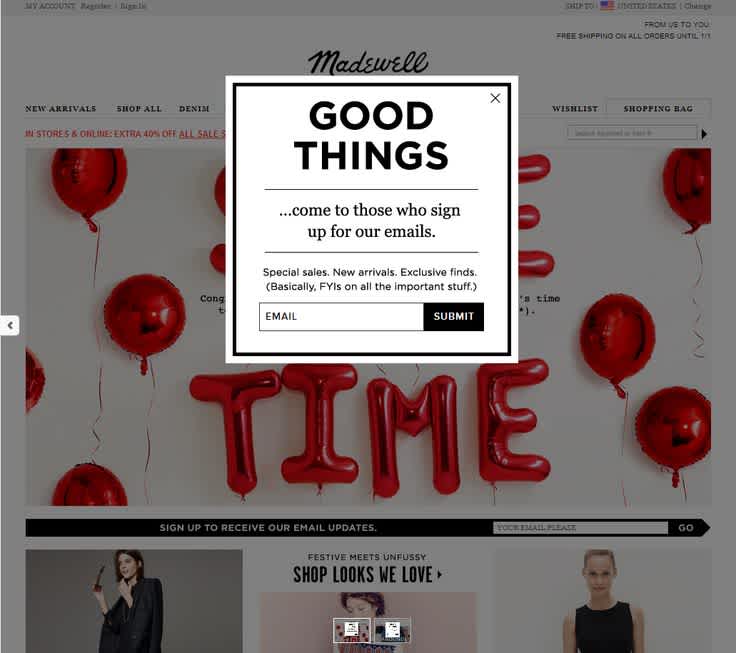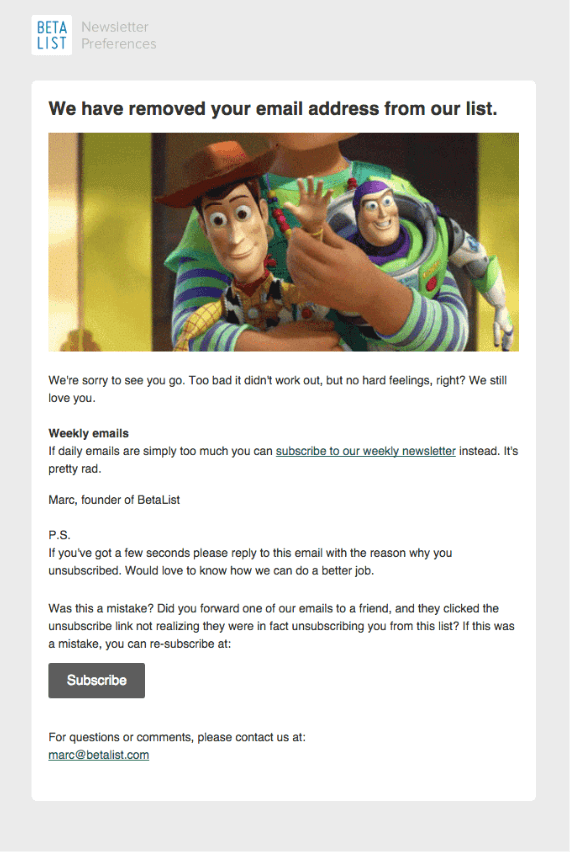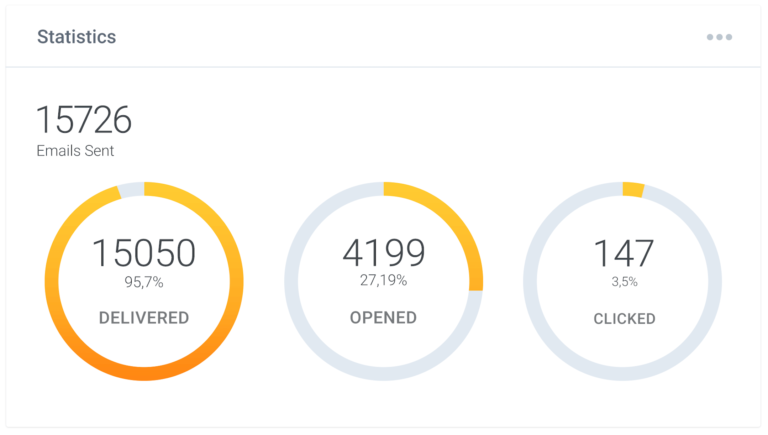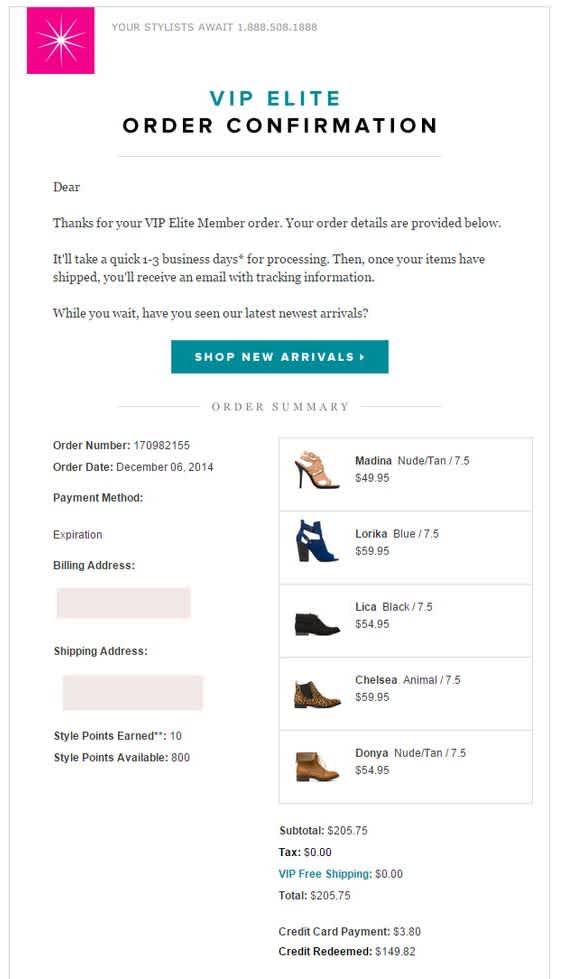Ecommerce is growing at an astronomical rate. In 2017, global e-commerce was responsible for $2.3 trillion in sales, and this is expected to grow to $4.5 trillion in 2021. That’s why, if you haven’t done it yet, it’s time to review your ecommerce email marketing strategy.
Alongside this growth, all signs point towards emailing as the preferred method of communication in ecommerce over other channels, including social media. In fact, 72% of people, (including those elusive millennials and teenagers) still primarily prefer email as their primary mode of communication with brands.
In this article, we will give you everything you need to get your ecommerce email marketing strategy up to par, including the different types of emails you’ll need in your customer journey, and essential tips to get content, design, data, and deliverability right.
Chapter 01
Email marketing strategy: The essentials
Before you send a large number of emails to your customers, it’s important to define your email marketing objectives. After all, to build a house you need a solid foundation. Your objectives will be your foundation.
Writing emails without a solid strategy will run the risk of sending campaigns that aren’t relevant, and that can result in a low click rate or worse – skyrocketing unsubscribe rates. You don’t want this, do you?
The key question you should be asking yourself here as an ecommerce company is: What do I want to achieve?
Your objectives could include:
Converting new customers
Increasing sales
Receiving reviews and feedback
Boosting customer loyalty and communication
Providing customers with information (about special offers, new products, etc.)
Introducing your company and your unique selling points

Of course, you don’t have to pick just one of these objectives, but it is beneficial to have just a few clearly defined objectives. Concentrate on those most important to you, your business, and where you want to grow. This will allow you to utilize your resources efficiently and also means you won’t waste unnecessary time creating email content that provides no added value.
Instead, ensure that your email campaign is perfectly tailored to your needs. Follow a clear objective that you can naturally adapt, modify, or realign over time.
Chapter 02
Email marketing tips for ecommerce
Within each of these campaigns, you always need to keep in mind the 6 key elements of any email strategy: content, design, data, tactics, personalization, and deliverability. To get right to the point, we’ve outlined what you need to consider in each email and included some examples (as well as cautionary tales) to help you with your own campaigns.
1. Spend time on your email content and design
Working on your email content and design should be one of your main concerns in your email marketing strategy. An unengaging subject line won’t entice customers to click on your emails, while poor design reduces the chances that your customers will find the right product for them.
What you want is to first optimize your subject line and preview text. After all, they are the gateways the first things people see in deciding on whether they should open your email or not.
Opt for subject lines that generate curiosity. This will make the reader feel they are missing something “valuable” and want to click into that email to find out more. Which fabric is in-season? What are those fresh finds? This is very effective marketing tactic. However, each “preview” text is simply their URL, www.etsy.com which is a missed opportunity to engage the reader some more.
Good content does not rely just on being creative, and good design isn’t just about being beautiful. Good content is about personalization and timeliness. Good design is about inciting an action.
This is especially impactful for ecommerce where a sale is just a click away, and good content paired with good design can effectively drive clicks.
This Black Friday email by Julep fulfills the basic rules of smart email marketing by knowing how to sell what it wants to sell, writing creative, holiday-oriented copy and ensuring responsive design across all devices and inboxes.

Julep Email Example
The header immediately introduces the email content (hint: it’s Black Friday sales!); the multi-column design blends image and text into creating compelling copy that guides customer attention. The Call-to-Action (CTA) button (SHOP NOW) also is strategically placed above-the-fold alongside the content. Customers don’t have to scroll down to see these great deals ($19.99 instead of $82), inciting them to click on the CTA.
2. Know the difference between marketing email, automated email, and transactional email
Learning the different types of emails will not only allow you to target different audiences, but to also target the same audiences in a variety of ways. Sending identical promotional emails every single time with just slightly-altered copies can quickly lead to a smash of the unsubscribe button.
As with all marketing efforts, email-marketing should be diverse and creative. As an ecommerce business, you will be sending three main categories of emails:
transactional emails
marketing emails
automated emails
Transactional emails are the types of emails you send out to customers after they’ve done an action. These emails can be purchase confirmations, account verifications, or password resets.

Harry’s Razor Transactional Email
This confirmation email by Harry’s does its intended job and more. In addition to ensuring that your order has, indeed, arrived, it’s also included some quick shaving tips for customers to read. Beyond just trying to drive sales, they’re trying to drive engagement, loyalty, and through education they are growing their connection to their audience.
On the other hand, marketing emails are bulk emails you send to your subscribed customers. This marketing email from New York & Company contains two types of promotions. The top section includes coupons encouraging customers to spend more to save more. The email’s main body introduces the arrival of their new collections by introducing a sale on their kimono sleeve sweater, for that perfect autumn aesthetic. Get creative and create value where customers had not seen. That’s showbiz marketing baby!

NY&C Email Example
Finally, automated emails are triggered by milestones. They can be automated in many ways, depending on your analysis of customer data. Automated emails can include welcome emails, feedback emails, anniversary emails, and retention emails. For example, if a user purchased a product from your store, you can send an automated email one week later to how they are liking it, whether they would like to buy one for a friend, or perhaps write a review on your site.
3. Avoid mistakes before sending
Of course, when you’re new to sending these different types of email, you’re bound to make a couple mistakes, or miss out on some things. To avoid that, send yourself a test email to ensure everything displays properly, that there are no typos and that the email is responsive.
Before sending emails or committing a template, make sure to pull your teammates into the email builder to have them provide their comments, and be sure to A/B test your campaigns to identify which piece of content, design, subject line, or CTAs drive the most engagement.
Don’t send emails from a useless “no-reply” address. “No reply” emails are those annoying emails you get from businesses sometimes who are making it very clear they don’t want to hear from you.

Not only is it a little rude, almost more importantly it can negatively impact your business as it is often flagged as spam.
4. Don’t ask for subscribers, incentivize subscription
Before sending emails to your customers, you have to make sure that your customers have subscribed to your emails in the first place. There are a lot of different ways to do this.
For example, you can invite website visitors to subscribe to your emails via pop-ups integrated into your website using Mailjet’s subscription widget or third party providers like SumoMe. Or like many of our customers have done so effectively, use the power of social media to invite customers into your mailing list.

Subscription Widget Pop-up
One thing that you need to include is an unsubscribe button in your channels. Yes, adding this will mean your list may decrease in size, but more importantly it lets your audience do the different work of cleaning your contact lists for you. By removing customers who’d rather not see your emails, you are ensuring that only those most active engaged users are being sent an email.
In turn, this means you are:
Spending less money sending emails to people who won’t open them anyways, or worse would mark it as spam.
Increasing your domain and IP reputation with ISPs and inboxes.

Unsubscription Email
One of Mailjet’s enterprise users, Videostream, knows the value of this all too well. With the help of a Customer Success Manager, Videostream cleaned their list from 1.2M contacts to 120K contacts. This 10x decrease in users actually resulted in a 5x more total opens, and an increase in ROI of 10x.
This is because the more people receive unwanted emails from you, the less likely it is you will land in the inbox of those who do in fact like you. Here’s a full case study on how Videostream accomplished this.
5. Track and use your data
Data should serve as the bedrock of your email marketing campaigns. Considering different buyer personas and the customer lifecycle in your email marketing will allow you to send the right email to the right people. Whether it is creating promotional holiday emails, or segmenting people into different groups, data will help you send the relevant emails to the right people.

Mailjet Email Stats
Useful email metrics to consider when using Mailjet’s platform include how many emails have been sent, delivered, opened and clicked.
The sent rate is a way of saying that the recipients’ servers have received the emails, and the delivery rate means that the recipients can now read them…somewhere (in their inbox? Spam? Mystery. Well, kinda.). The opened rate shows how many people have opened their emails, and the click-through rate shows how many times your customers have clicked on a link in your emails since receiving them.
Other types of data that you want to track, of course, are related to the types of customers you want to target. Getting actionable customer insights will help you send the right types of emails to the right segments, and create engaging, personalized emails.
6. Optimize your ecommerce email marketing strategy
Even the most successful email campaign can be improved. So you need to keep testing your performance.
Ask yourself these questions and adjust your content accordingly:
Which email subject line has the best opening rate?
Which links and call-to-action buttons generate the most clicks?
Which email content was uninteresting for your subscribers?
You can use A/B testing to compare different types of content and then see which alternative was received most positively by your customers.
You can use a tracking function for a step-by-step breakdown of if and when an email has been opened, and which links and widgets were used. With this knowledge, you can improve and adjust your future campaigns.
Segmentation can also be carried out based on this evaluation. You can send personalized email content and build an optimized list of newsletter subscribers.
7. Work on your deliverability
Improving your deliverability – the rate at which your email reaches your customers’ inboxes – is of utmost importance to ensure that your emails do not go not into the spam folder, where emails go to die.
Essentially, all of the previous tips lead up to getting a higher deliverability rate for your ecommerce business. Creating compelling, data-driven email copies will increase the open rates and click rates, which improve your sender reputation. Your contact list should be constantly updated and adequately segmented so that the right people receive the right emails.
To get high delivery rates, have a good, reliable email service provider (like Mailjet). There are many marketing platforms that can send your emails, and have become particularly good at providing both a CRM and an email system, however these tools are often good at a few things but are simply not as strong in email deliverability as an email service provider can be.
This is primarily because good deliverability requires three things that take time, resources, and a commitment to email:
Strong and on-going relationships with inbox providers.
A robust infrastructure and third party vetting tools.
Deliverability experts to help maintain quality domain and IP addresses for senders like you.
On your side of the equation, you will need to enable your Sender Policy Framework (SPF) and Domain Keys Identified Mail Option (DKIM). These allow your ISPs to recognize the fact that your emails come from a reliable, authorized system, and prevent spammers from stealing the identity of legitimate identities. Mailjet provides an easy-to-follow guide to do this.
Chapter 03
Ecommerce email campaign ideas along the customer journey
As an online shop, there are many types of emails that you could send out. In order to make the most of all email marketing potential, we recommend integrating marketing and transactional emails along the customer lifecycle.
The benefit of focusing on the customer journey is that it allows you to deduce current customer needs and create personalized content.
Here are the seven different email campaigns you should use, depending on your objectives and customer journey:
1. The welcome email
No matter what, first impressions really count.
When welcoming a new “member” to your email list, send them a welcome email containing valuable content that will inspire them to continue to engage with new articles. For instance, this is a great opportunity to:
Introduce your company and your products.
Make the subscriber aware of your social media channels.
Provide an overview of what type of emails you will be sending.
Send them a welcome gift to validate their decision to subscribe
Indicate important links.
Ultimately what you want is to convey a positive and trustworthy first impression, which will make your new subscriber look forward to receiving more.

Mailjet’s Welcome Email
2. The classic newsletter
Once you’ve won over new subscribers, you need to make sure they stay in your list by providing them with valuable content.
Naturally, the exact content depends on your business model and customers. As an ecommerce company, you can offer the following newsletter content:
Promoting your own products
Guides for your products
A behind-the-scenes look at production
Compelling content and entertainment like videos
Customer interviews and testimonials

Penguin Books Newsletter
Don’t make the mistake of thinking that your newsletter is only there to sell. Sending out newsletters that are too pushy will cause people to unsubscribe from your list, or put a bad taste in their mouth. Instead this is an opportunity to take an engaged list of potential customers and make them love you.
Ask yourself the following questions and create your newsletter accordingly:
What interests my readers?
What questions might they have?
What problems are they currently facing?
How, specifically, can I help them solving these problems?
3. Special occasion newsletters
In addition to your regular newsletter, you can create email campaigns for special events. These can be for holidays such as Christmas, Easter, and Mother’s Day, as well as seasonal events such as the World Cup, the Olympics, or Oktoberfest.
You could even, for example, showcase your expert knowledge in the form of useful tips and tricks, or make readers aware of special offers. However, make sure that it all ties back to your company and brand message.

Nokia Holiday Newsletter
4. Order and shipping confirmations
While you can send out marketing campaigns at any time, transactional emails are triggered by customer action. These include, for example, newsletter subscriptions, invoices, and purchase confirmations.
As an ecommerce company, your main objective is obviously to promote sales in your online shop. Once a customer buys something, you should first send them an order confirmation and then an email receipt. Once the purchased product is sent for delivery, you can then send them a shipping confirmation.
Transactional emails tend to have higher open rates, as customers already expect to receive your communications and look forward to receiving their purchase.
Make sure you leverage these emails to make your customers aware of other products or special offers. This is the best time for you to upsell, when they are most engaged and you know they are opening the email. Don’t miss the chance.

Order Confirmation Email
5. Customer surveys
Show your customer that their opinion is important to you by sending them customer surveys and other feedback emails. This could target individual products, the entire shop, the service, or all of the above.
Customer surveys are absolutely essential to you for the following reasons:
To check if your communication with customers is clear and coherent.
To obtain and guide the attention of your customers.
To strengthen customer loyalty.
To inspire you with new product ideas.

Headspace Survey Email
6. Shopping cart dropouts
Has your customer halted a transaction or left an item in their shopping cart? Remind them with a friendly email! This gives you an additional option to show them similar products and offers, or provide them with buying incentives through discounts.

Abandoned Cart Email
Don’t give up on any customers! You can send a personalized email to inactive users. This allows you to find out if they are still interested in your services and remind them about your unique products.
If you succeed in winning the customer back, you can surprise them with a “Welcome back” email. You can make a good impression here with the aid of discounts or coupons.
If you don’t receive a reaction following several messages, then it may be best to part ways and remove the contact from your list. Yes, we know it’s always hard to let them go… but it’s best for everyone this way (more on this below…)
7. Personalized note to your customers
You can engage your customers in a more personal manner and develop a friendly relationship with personalized touches such as a birthday email with coupon.
Think about whether you would like to show appreciation to particular customers – after all, loyalty should be rewarded! For example, cheaper account upgrades are a possibility here.
While we’re on the topic of rewards, you may want to provide incentives for customers and subscribers who recommend you others. Make it easy to recommend your website and shop, and show your appreciation for each customer gained this way.

Automated Birthday Email
Chapter 04
Summing up
You are now ready to make the most of email marketing for your ecommerce company. You know you need an effective email marketing strategy, how to create and manage email lists, and which types of emails are just waiting for you to use them.
Remember these top email tips for ecommerce businesses:
Tip 1: Marry good content with smart design to drive customers towards your products.
Tip 2: Learning different kinds of email will really allow you to take advantage of email’s sweet ROI. And don’t do no-reply emails. It’s bad for business.
Tip 3: Take multi-channel approaches to incentivize subscription. But make it also easy to unsubscribe to make sure that you’re not sending emails to people who will never read your emails.
Tip 4: Tracking data on customers and email will help indicate what works and what doesn’t.
Tip 5: Personalize and segment your email campaigns, putting in that little extra effort on each campaign and in data collection will go a long long way in standing out from the crowd.
Tip 6: Make sure your emails don’t go in the spam folder by sending emails smartly and following the previous tips.
Mailjet offers you all of the email functions and tools that online shops need for this purpose. Don’t miss any more opportunities for your ecommerce business. Simply log into Mailjet or set up a free account:
Have you tried any of these email campaigns? How did it go? Share it with us on Twitter!
***
This blog post is an updated version of the post “The Ultimate Guide to Email for ecommerce”, published on the Mailjet blog on October 11th, 2018 by Julian Canlas and Jan Bernecke.










